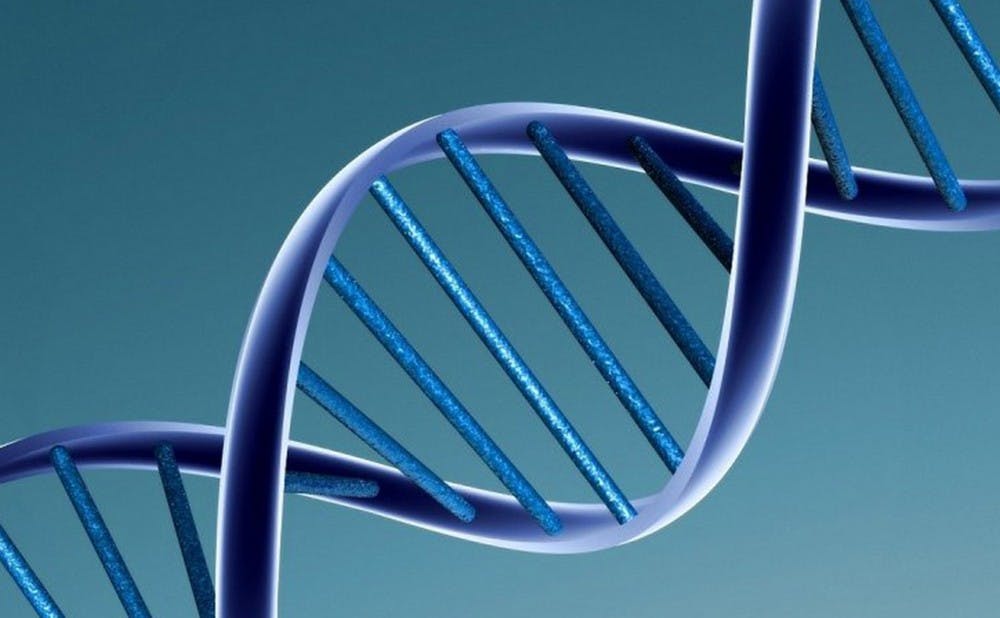Photolyases, ancient proteins that are present in nearly all organisms under the sun, have stumped scientists for decades. But theoretical chemists at Duke have finally figured out how they work, according to a new study by Duke researchers.
Dating back billions of years, photolyases are microscopic tools that repair genetic code damaged by ultraviolet light—the source of sunburns and skin cancers in humans. They were crucial for early life on Earth when the ozone layer did not yet exist and every sunlit surface was battered with deadly UV radiation. Photolyases allowed these pioneering organisms to preserve their genes and survive—and they still serve that role in many species today.
“It’s a really cool protein because it basically does everything by itself,” said Benjamin Rousseau, Trinity '17 and a research technician in the Beratan Lab.
Rousseau, lead author of the study, explained that the protein’s “antenna” captures blue light from the sun and uses it to excite an electron, which it then moves to the affected DNA and repairs the damage.
It is this penultimate step that has caused headaches for scientists. Despite decades of research, exactly how the bulky protein handled the subatomic particle remained a mystery, and different studies had shown different paths the electron could take, all of which seemed correct.
Rousseau worked alongside David Beratan, R.J. Reynolds professor of chemistry, and Agostino Migliore, assistant research professor of chemistry, to finally solve the puzzle.
The answer lies in temperature. Using computer simulations of E. coli bacteria, the researchers found that photolyase slightly changed its shape when cooled, which twisted a molecule called adenine.
The process then entirely changed how the electron was transferred—instead of floating toward the broken DNA, it took the scenic route through adenine.
“There’s a significant difference in how adenine is involved in this mechanism,” Rousseau said. “And remember, this is the mechanism that was crucial for life to survive on early Earth.”
The study, which was published Feb. 28 in the "Journal of the American Chemical Society," depended on cutting-edge computer simulations to develop its findings. Through the programs, the researchers were able to see exactly which atoms moved and track how the protein changed shape on the molecular level. Their efforts paid off with significant implications.
“This is a pretty clear example of a temperature gate, which is a very cool phenomenon in biological electron transfer,” Rousseau said. “All it takes is something [like adenine] to tilt backwards, and suddenly the circuit is shut off. It’s like a light switch that turns off at 37 degrees Celsius.”
This “light switch” behavior, combined with its activation by light and completely self-sufficient nature, makes photolyase an even more interesting candidate for protein engineering, Rousseau noted.
“It can be applicable to anything under the sun,” he said. “Just put it outside, and it starts working. All I need to do is modify the active site a little bit, and then I’m repairing something else. What we’ve done here is assist anyone who wants to use photolyase.”
The study, which was made possible through a NASA grant, was conducted entirely on computers, without involving any actual proteins or organisms. Although their study was purely theoretical, Rousseau was not too concerned.
“It’s impossible to say the results are definitely true,” he said. “But the implications from this paper are big enough to justify an experimental study, and we are working with collaborators to come up with an experiment.”
Meanwhile, Rousseau said he is already working on ways to improve the theoretical side. In a follow-up project, he is using the Anton supercomputer—the most powerful computer in the world for molecule simulations—to recreate the virtual experiments and to devise new ones, in hopes they will reveal other proteins that are similarly related through electrons and temperature.
“To the best of our knowledge, these studies are the first of their kind,” Rousseau said.
Editor's Note: This article was updated April 4 to better reflect the original study.
Get The Chronicle straight to your inbox
Signup for our weekly newsletter. Cancel at any time.

